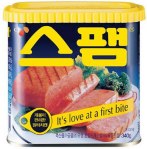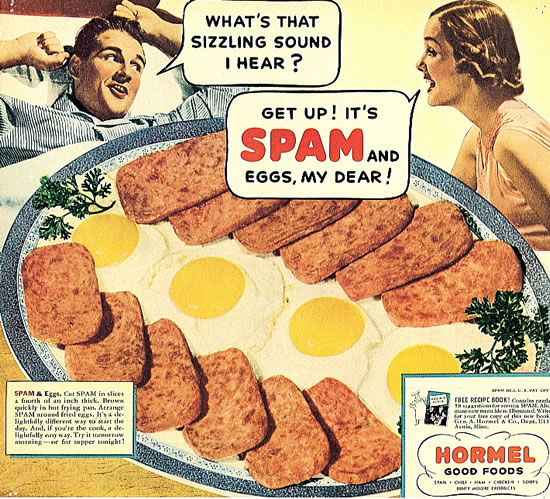For those who have spent an extended time in South Korea, all will know (and likely joke) about the giving of Spam as a present to loved ones on special occasions such as this weekend’s
Lunar New Year celebration —a holiday that has seen 1.6 million Spam gift packs dispersed at homes across the country.
I wasn’t a big fan of Spam back in the States, and when I first arrived in Korea I thought it odd that people would give it as a gift to someone they actually loved. Though I have yet to break the gift barrier in my Spam ventures, I would later learn of its interesting history here and come to appreciate what we, as kids, called “mystery meat.”
The New York Timeshas taken up the topic of Spam in Korea and gives a nice bit of history behind its ongoing popularity on the peninsula, the second largest Spam market in the world after the U.S.
In the United States, the gelatinous meat product in the familiar blue and yellow cans has held a place as thrifty pantry staple, culinary joke and kitschy fare for hipsters without ever losing its low-rent reputation. But in economically vibrant South Korea, the pink bricks of pork shoulder and ham have taken on a bit of glamour as they have worked their way into people’s affections.
“Here, Spam is a classy gift you can give to people you care about during the holiday,” said Im So-ra, a saleswoman at the high-end Lotte Department Store in downtown Seoul who proudly displayed stylish boxes with cans of Spam nestled inside.
And hey, when economic imperialism is done right, you’ve gotta give credit where credit is due.
Spam’s journey from surplus pork shoulder in Minnesota to the center of the South Korean dining table began at a time of privation — hitching a ride with the American military during the Korean War and becoming a longed-for luxury in the desperate years afterward, when American troops stayed to keep the peace.
“PX food was the only way you could get meat,” said Kim Jong-sik, 79, a South Korean veteran, referring to the American Army’s post exchange stores. “Spam was a luxury available only to the rich and well-connected.”
My first Spam foray in Korea was when, in a pinch, I bought a can at the convenience store to throw in with some soup. I must admit, my middle-class American upbringing wreaked havoc on my conscious as I walked towards the checkout counter: Am I really going to buy and cook a can of Spam? What’s next, using the leftover tin for panhandling in subway?
In retrospect, these notions were all the more ridiculous considering that it cost me nearly five bucks for one can.
I have since come to thoroughly enjoy frying it up with eggs and given it a home on my list of occasional dietary staples. For me, the consistency of Spam makes it kind of like ham flavored tofu—it offers the illusion of health without the nasty side effects of eating healthy. What more could I ask for?
You can read the rest of the piece for yourself at The New York Times.


